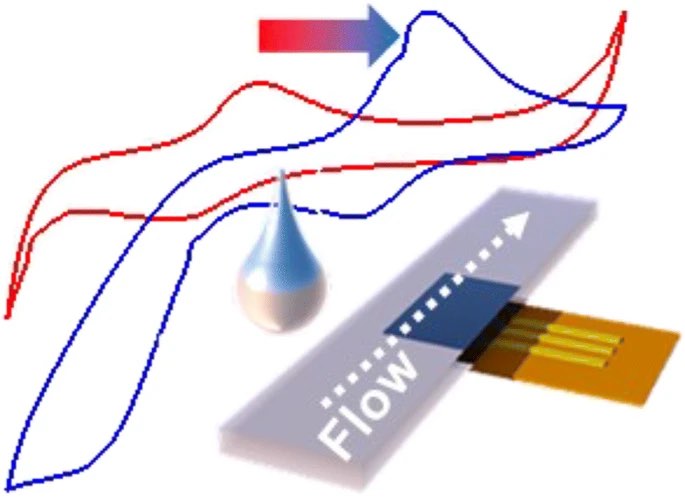A flexible sensor is presented for electrochemical detection of ascorbic acid in sweat based on single-step modified gold microelectrodes. The modification consists of electrodeposition of alginate membrane with trapped CuO nanoparticles. The electrodes are fabricated at a thin polyimide support and the soft nature of the membrane can withstand mechanical stress beyond requirements for skin monitoring. After characterization of the membrane via optical and scanning electron microscopy and cyclic voltammetry, the oxidative properties of CuO are exploited toward ascorbic acid for amperometric measurement at micromolar levels in neutral buffer and acidic artificial sweat, at ultralow applied potential (− 5 mV vs. Au pseudo-reference electrode). Alternatively, measurement of the horizontal shift of redox peaks by cyclic voltammetry is also possible. Obtaining a limit of detection of 1.97 μM, sensitivity of 0.103 V log (μM)

A flexible sensor is presented for electrochemical detection of ascorbic acid in sweat based on single-step modified gold microelectrodes. The modification consists of electrodeposition of alginate membrane with trapped CuO nanoparticles. The electrodes are fabricated at a thin polyimide support and the soft nature of the membrane can withstand mechanical stress beyond requirements for skin monitoring. After characterization of the membrane via optical and scanning electron microscopy and cyclic voltammetry, the oxidative properties of CuO are exploited toward ascorbic acid for amperometric measurement at micromolar levels in neutral buffer and acidic artificial sweat, at ultralow applied potential (− 5 mV vs. Au pseudo-reference electrode). Alternatively, measurement of the horizontal shift of redox peaks by cyclic voltammetry is also possible. Obtaining a limit of detection of 1.97 μM, sensitivity of 0.103 V log (μM)
